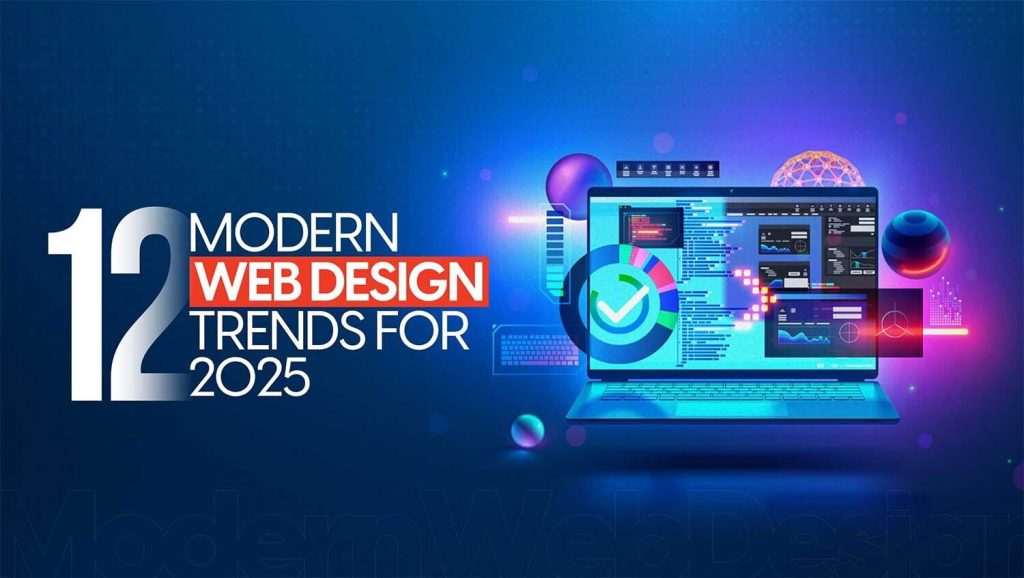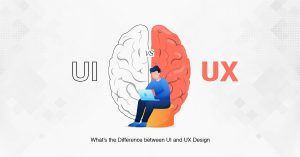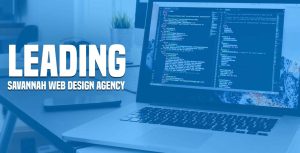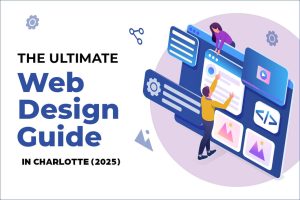
In the rapidly evolving digital landscape, web design has become a crucial tool for business growth, customer engagement, and brand storytelling. For Tulsa-based businesses, staying ahead of the curve in web design trends can be the key to gaining a competitive edge. It is important to understand the industry dynamics to get a hold of the trends. To cover all the aspects of top web design trends for Tulsa businesses in 2025, you need to read the guide carefully to grow your business.
The Importance of Web Design in 2025
A business’s website is no longer just a digital brochure but a critical touchpoint in the customer journey. Modern consumers expect fast-loading, visually appealing, responsive, and interactive websites. In 2025, the convergence of user experience (UX), user interface (UI), content strategy, and search engine optimization (SEO) will define a successful web presence.
Key Elements of Modern Web Design:
Mobile responsiveness
Speed optimization
AI integration for personalization
Interactive elements and micro-animations
Advanced SEO with semantic keyword mapping
Inclusive and accessible design
Content clustering and structured data
Top Web Design Trends for 2025
The digital world is changing more quickly than ever, and as we enter 2025, the Tulsa web design landscape is evolving to be more sophisticated, human-centered, immersive, and interactive. With customers needing seamless, personalized, and enjoyable experiences, developers and designers are using the latest technologies and philosophies of design to keep ahead of the curve. Let’s take a look at the most important web design trends that will define 2025, including AI-driven personalized web design to long-term sustainable practices.
Stay Ahead with Tulsa’s Top Web Design Experts
1. AI-Driven Personalization
Artificial Intelligence (AI) is not a new concept. It’s an integral part of contemporary web design. By 2025, websites will be increasingly utilizing AI to customize each aspect of the user experience. From intelligent content recommendations based on browsing habits and dynamic designs that adjust with the changing times of users, AI is helping websites provide content that is custom-made for each user. AI-powered chatbots have become nimbler, capable of recognizing complex queries and providing immediate, relevant help. Predictive search is also changing the way users engage with web content by providing suggestions before they have finished typing, which enhances users’ engagement and retention.
2. Voice User Interfaces (VUIs)
With the growing popularity of smart speakers as well as voice assistants such as Alexa, Siri, and Google Assistant, the web is evolving to a voice-first world. Websites are optimizing their content for search queries with semantic keywords, conversational phrasings, and question-based headings.
Designers are working on integrating VUIs into websites, which allow users to navigate websites using basic voice commands. This not only improves ease of use but also aligns with the increasing trend of hands-free digital interaction, particularly for smart homes and mobile use.
3. Simple Design with a Purposeful Animation
Simple aesthetics continue to be the dominant feature. However, by 2026, modest designs will be reimagined through interactive micro-interactions and animations. Simple layouts that have plenty of white space are coupled with subtle hover effects, animations, or loading sequences that give character without compromising usability. Animations are used to help users navigate, emphasize key aspects, and provide visual feedback to improve overall UX. This is no longer about looking stylish; it’s about creating engaging, enjoyable user experiences.
4. Dark Mode and Soft UI (Neumorphism)
It’s not just for fashion, it’s practical. The effect is soothing, and visually pleasing dark themes are more comfortable to look at, especially in dim light environments. They could even cut down on battery usage on OLED displays. In addition, Soft UI (Neumorphism) is gaining traction. This style of design combines flat design and imitation, creating 3D-like, subtle design elements with soft shadows and subtle gradients. It gives interfaces a tactile feel—buttons that appear “pressable” and inputs that feel “embedded”—enhancing the overall sensory experience of digital interaction.
Bring These Trends to Life on Your Website
5. Enhanced Accessibility as a Standard
Inclusive design is no longer a luxury but is legally and ethically required. In 2025, accessibility for web users is being integrated into every phase of the design process. From the color contrast that can accommodate visually impaired users to accessibility for keyboards and screen readers to accessibility, developers are working to ensure equal access to the internet for everyone. Accessibility tools such as ARIA labels and responsive font sizes or alternative images with text are becoming widely used. This is part of a wider shift towards universal design, which aims to meet the needs of all people regardless of abilities.
6. Augmented Reality (AR) Integrations
Augmented Reality has transformed how users interact with the web, specifically in the fields of real estate, retail, and automotive. In 2025, we can expect to experience AR-based try-ons for makeup and fashion, virtual home tours for prospective buyers, as well as interactive 3D previews of products.
WebAR (browser-based AR) removes the requirement for additional apps, which makes immersive experiences more readily available. This doesn’t just boost the engagement of users but can also bridge the gap between physical and digital interaction, leading to more secure purchasing choices.
7. High-Impact Storytelling Through Visuals
Storytelling is a vital tool in web design however, 2025 brings it to life using animated visuals. Businesses are making use of full-screen videos as well as parallax scrolling, cinemagraphs, and animated illustrations to create immersive brand stories. Visual storytelling draws users in emotionally, bringing them to the website for longer, and boosting conversion rates. If done correctly, it conveys brand values better than layouts that rely on text, creating deeper emotional connections with your viewers.
8. Advanced Structured Data for Better SEO
Structured data isn’t an added benefit; it’s crucial for visibility. As search engines get increasingly sophisticated, websites are making use of schema markup to improve the search results with rich snippets such as FAQs, product reviews, and more. These improvements not only boost SEO performance but also give users immediate, pertinent information straight from the results of a search, which increases click-through rates as well as trust among users.
9. Sustainable and Energy-Efficient Design
Sustainability is becoming a prominent feature in the digital age. In 2025, the friendly website design is focused on reducing carbon footprints via optimized code, efficient image formats, and sustainable hosting services. Lightweight websites load faster, use less energy, and improve performance–benefiting both the environment and the user. Tools that estimate a site’s carbon footprint are now an integral part of the design process, which is pushing the industry to eco-friendly methods.
10. Hyperlocal Design Strategy
Local SEO is now becoming hyper-focused. Businesses, especially in cities like Tulsa, are embracing hyperlocal design strategies that include community-focused content, neighborhood-specific keywords, and interactive event calendars.
Websites are also including local images or content created by users, as well as real-time updates, to connect with local audiences. This approach helps build trust and credibility in local communities, allowing brands to feel more accessible in their area.
Web design in 2025 is a mixture of aesthetics, technology, and a sense of. It doesn’t matter if it’s via AI-driven experiences or sustainable frameworks, the future of web design isn’t just about the way it looks, but how it functions for everyone. To stay on top, businesses should embrace these trends, not as trendy fads, but instead as evolving standards that emphasize accessibility, user experience, and the pursuit of innovation.
Let’s Build a Future-Ready Website Together
Statistical Analysis by State: Tulsa Web Design Landscape
According to the latest reports from the Oklahoma Department of Commerce and the Tulsa Chamber of Commerce:
- 75% of web design Tulsa businesses invested in website upgrades or redesigns in 2024.
- Businesses with responsive, fast websites saw a 48% increase in lead generation.
- The average cost of a complete website redesign in Tulsa ranges from $4,500 to $15,000.
The top three industries investing in web design are healthcare, retail, and legal services.
Most popular platforms used in Tulsa:
- WordPress (42%)
- Shopify (25%)
- Wix/Squarespace (18%)
Custom Code/HTML (15%)
Top 10 Web Design Companies in Tulsa
1. Direct Allied Agency
- Overview: Built in 2025, Direct Allied Agency specializes in custom Tulsa web design services, SEO, and digital marketing solutions tailored for small to medium-sized businesses.
- Notable Clients: Diverse industries including healthcare, finance, and legal sectors.
- Location: Tulsa, OK
2. Matcha Design
- Overview: With over 30 years of experience, Matcha Design offers award-winning creative services, including web design, branding, and advertising.
- Specialties: Full-service creative agency with a focus on unique, research-driven digital designs.
- Location: Tulsa, OK
3. Seed Technologies
- Overview: Seed Technologies provides comprehensive web design and development services, emphasizing customized solutions to enhance online presence.
- Services: Web design, software development, and digital marketing.
- Location: Tulsa, OK
4. Ambitious Web Services
- Overview: Founded in 1999, Ambitious Web Services offers a range of services from custom web design to SEO and digital marketing strategies.
- Experience: Over two decades of serving businesses of all sizes.
- Location: Tulsa, OK
5. Hire Jordan Smith
- Overview: A veteran-owned agency providing honest and reliable web design, development, and SEO services, with over 500 websites built.
- Specialties: Custom websites tailored to each client’s brand and goals.
- Location: Tulsa, OK
6. Phillips360
- Overview: Since 2008, Phillips360 has been delivering customized web design and development solutions, focusing on user-centric designs that drive results.
- Services: Web design, SEO, custom CMS, and digital marketing.
- Location: Tulsa, OK
7. Anax Designs
- Overview: Anax Designs offers comprehensive web solutions, including design, development, SEO, and content creation.
- Specialties: Website design and development, maintenance, and digital marketing.
Location: Tulsa, OK
FAQs (Frequently Asked Questions)
Why is responsive design critical for 2025?
Because mobile-first indexing by Google requires your site to perform optimally on all devices.
How much does it cost to design a website in Tulsa?
Costs typically range from $4,500 to $15,000, depending on functionality and custom features.
What’s the ROI of redesigning a website?
On average, Tulsa businesses report a 200-300% ROI within 12 months.
How important is page speed in 2025?
Extremely. Faster websites retain users better and rank higher in search engines.
What is structured data, and why does it matter?
Structured data helps search engines better understand your content, improving SEO.
Is AI useful for small businesses?
Yes. AI tools can automate customer service, recommend products, and personalize UX affordably.
What is content clustering?
It involves grouping content by topic and linking it internally to improve authority and SEO.
Should I use a CMS or go custom?
For most Tulsa businesses, a CMS like WordPress offers the best balance of cost and flexibility.
How do I improve local SEO?
Use location-based keywords, Google Business Profile optimization, and get local backlinks.
What is accessibility in web design?
It means making your site usable for all, including those with disabilities.
How often should I update my website design?
Every 2-3 years, or when user behavior and tech standards shift significantly.
Is dark mode just a trend?
No. It’s a user preference now supported widely across mobile devices.
Can I get leads directly from my website?
Absolutely. The right design, CTAs, and SEO ensure your website can become a lead machine.
How can structured data increase my visibility?
It can enhance listings with star ratings, FAQs, and other rich results in search engines.
How do I choose the right web design agency in Tulsa?
Look at their portfolio, client reviews, experience in your industry, and ability to integrate SEO and UX.
General Opinion and Insights
Business owners in Tulsa recognize that a strong digital presence is no longer optional. There’s a growing emphasis on full-service agencies that provide design, development, and marketing under one roof. Companies that invest in UX/UI and localized SEO are dominating their niches. Customers now expect real-time interactions, faster load speeds, and personalized content. Websites that reflect reality, credibility, and value are converting more leads than ever before.
Latest Updates in the Web Design Industry
- Google’s Search Generative Experience (SGE) will soon make user intent even more important for ranking.
- Core Web Vitals are now standard performance metrics in SEO.
- AI website builders like Wix ADI and Bookmark are becoming smarter.
- Mobile-first experiences are dominating, especially in the e-commerce and service sectors.
Data privacy and cookie policy compliance will be stricter by the end of 2025.
Conclusion
Web design trends in 2025 are deeply rooted in personalization, speed, diversity, and local relevance. For Tulsa businesses, adapting to these changes is crucial for survival and success in the digital era. With tools like structured data, content clustering, and AI-driven interfaces, businesses can turn their websites into powerful lead-generation hubs.
Investing in the right web design strategy today ensures long-term benefits—higher engagement, better conversions, and a stronger brand reputation.
If you’re looking to take your Tulsa business online or upgrade your current site, start by partnering with experienced agencies who understand your local market and have a vision for the future.
Start Your Web Design Project in Tulsa Today






